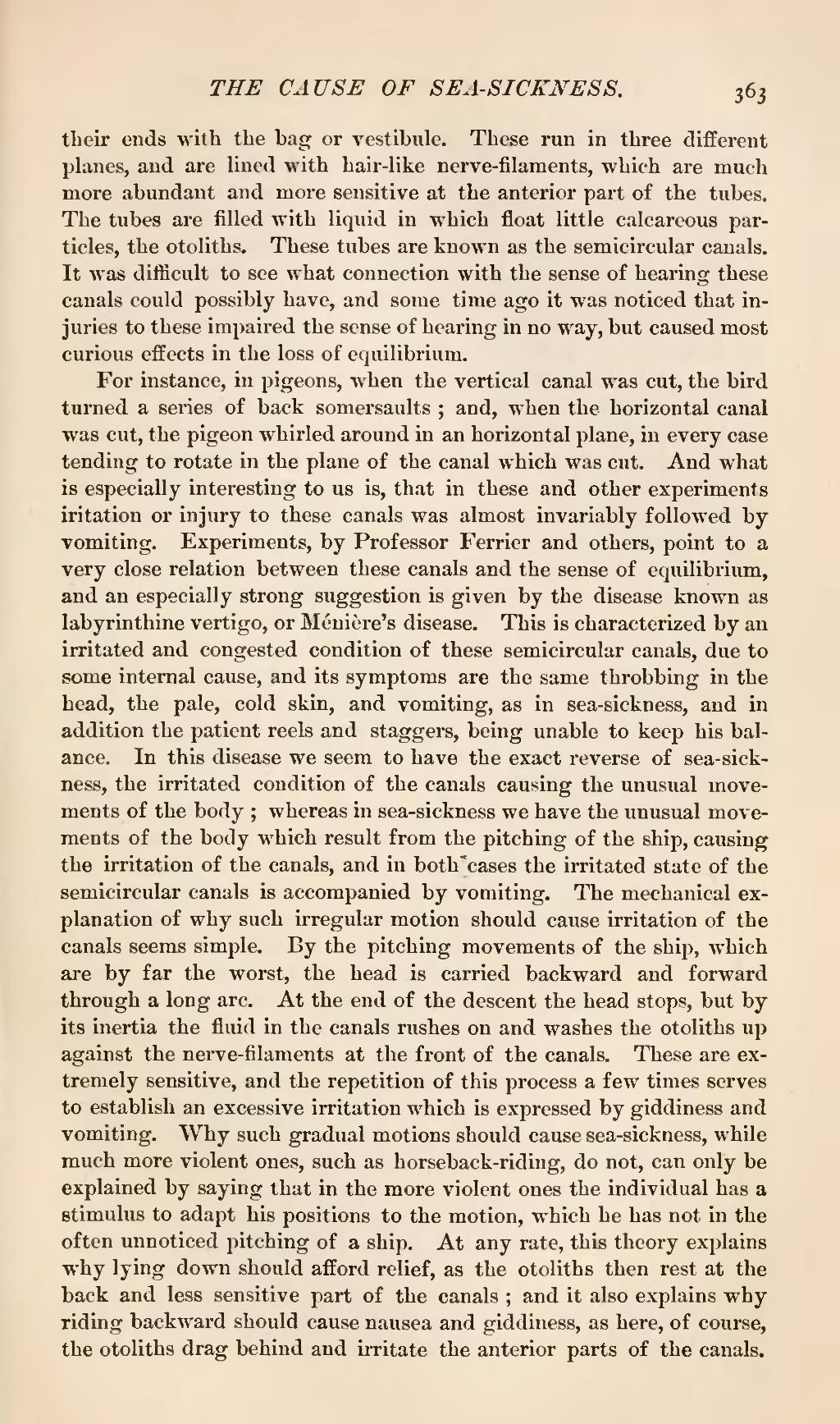their ends with the bag or vestibule. These run in three different planes, and are lined with hair-like nerve-filaments, which are much more abundant and more sensitive at the anterior part of the tubes. The tubes are filled with liquid in which float little calcareous particles, the otoliths. These tubes are known as the semicircular canals. It was difficult to see what connection with the sense of hearing these canals could possibly have, and some time ago it was noticed that injuries to these impaired the sense of hearing in no way, but caused most curious effects in the loss of equilibrium.
For instance, in pigeons, when the vertical canal was cut, the bird turned a series of back somersaults; and, when the horizontal canal was cut, the pigeon whirled around in an horizontal plane, in every case tending to rotate in the plane of the canal which was cut. And what is especially interesting to us is, that in these and other experiments iritation or injury to these canals was almost invariably followed by vomiting. Experiments, by Professor Ferrier and others, point to a very close relation between these canals and the sense of equilibrium, and an especially strong suggestion is given by the disease known as labyrinthine vertigo, or Ménière's disease. This is characterized by an irritated and congested condition of these semicircular canals, due to some internal cause, and its symptoms are the same throbbing in the head, the pale, cold skin, and vomiting, as in sea-sickness, and in addition the patient reels and staggers, being unable to keep his balance. In this disease we seem to have the exact reverse of sea-sickness, the irritated condition of the canals causing the unusual movements of the body; whereas in sea-sickness we have the unusual movements of the body which result from the pitching of the ship, causing the irritation of the canals, and in both cases the irritated state of the semicircular canals is accompanied by vomiting. The mechanical explanation of why such irregular motion should cause irritation of the canals seems simple. By the pitching movements of the ship, which are by far the worst, the head is carried backward and forward through a long arc. At the end of the descent the head stops, but by its inertia the fluid in the canals rushes on and washes the otoliths up against the nerve-filaments at the front of the canals. These are extremely sensitive, and the repetition of this process a few times serves to establish an excessive irritation which is expressed by giddiness and vomiting. Why such gradual motions should cause sea-sickness, while much more violent ones, such as horseback-riding, do not, can only be explained by saying that in the more violent ones the individual has a stimulus to adapt his positions to the motion, which he has not in the often unnoticed pitching of a ship. At any rate, this theory explains why lying down should afford relief, as the otoliths then rest at the back and less sensitive part of the canals; and it also explains why riding backward should cause nausea and giddiness, as here, of course, the otoliths drag behind and irritate the anterior parts of the canals.
